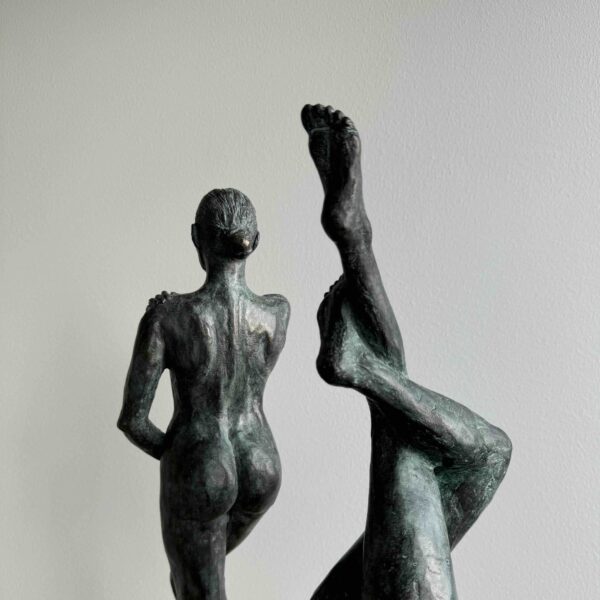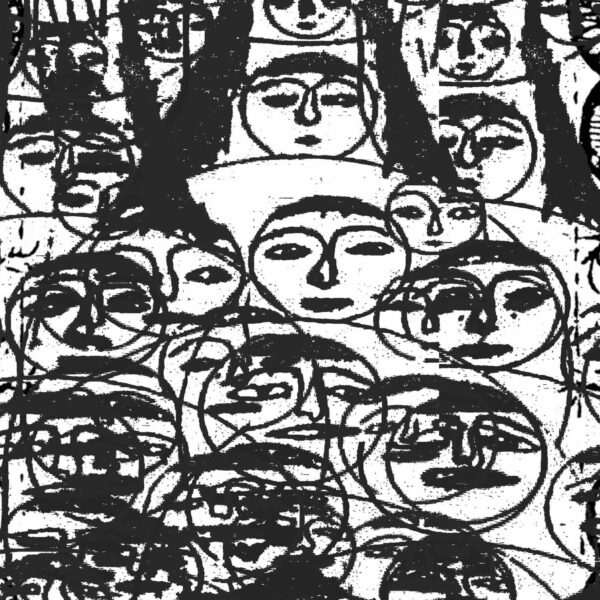Art of this Millenium and Art in this Time: The Inaugural AOTM Artists in Residence Program
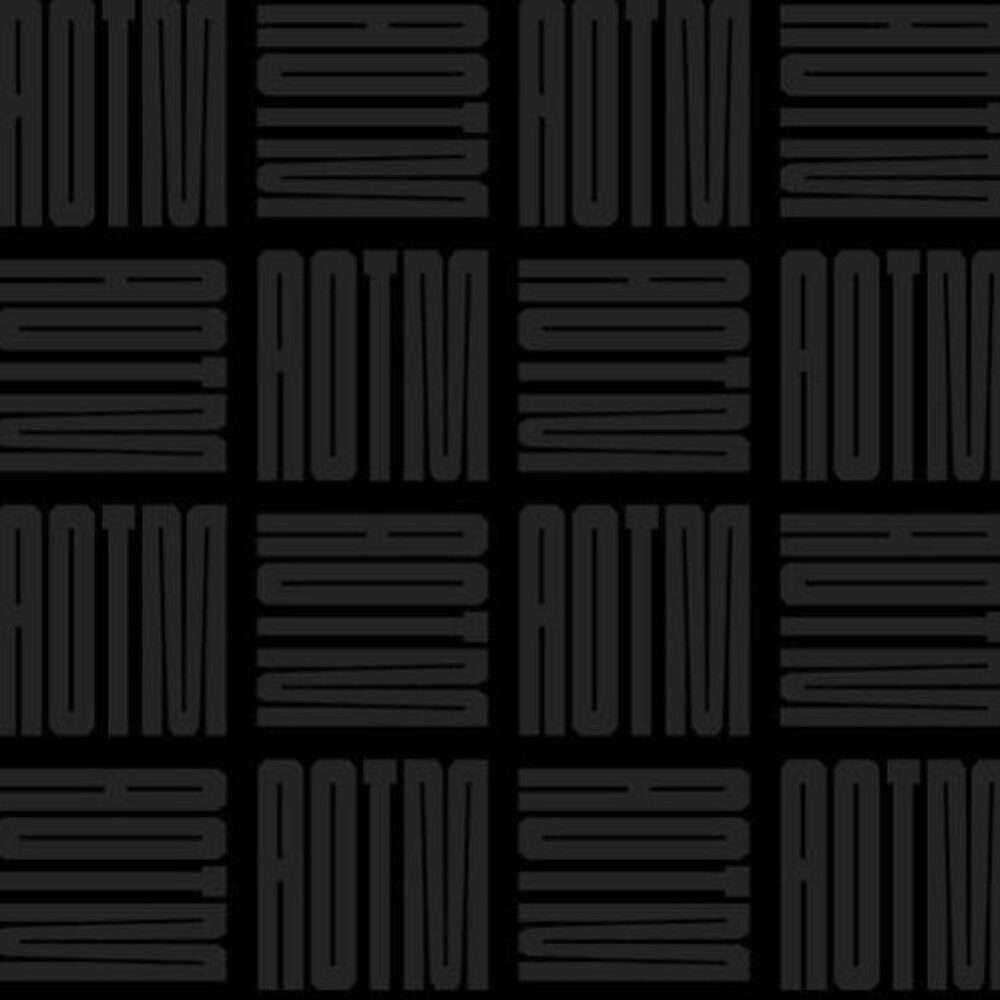
In January 2024, AOTM welcomed the inaugural cohort of its Artists in Residence program, launching with three talented artists from around the world, each working in different digital mediums: Amaan Jahangir (UK), Goyong (Korea), and Rebecca Rose (USA).
Since its inception in November 2022, AOTM has endeavored to position itself as the leading global digital gallery, representing the top digital artists working today. In web3 and the nascent digital art landscape, what does it mean to be a gallery?
In the End, it is all Art.
This “still early” digital art landscape is in a crucial time of growth, discovery, and building, and is in a constant and nuanced conversation with the established traditional art world. We push against that ivory tower, while also seeking the credibility of its acknowledgement. We seek to define ourselves as a disruptive, avant-garde incumbent, while also seeking to collapse the divide between “trad art” and “on-chain” or “crypto art” (“digital art” and “new media” having actually been around since the mid-20th century): indeed, it is all Art.
In this exciting and challenging state of becoming, the beauty of the web3 digital art space is the freedom to do things differently, and to “curate” those different things. This is to say, we can mine the establishment for value, and translate that value into our own language, impacting the development of this space directly and poignantly.
AOTM’s Artists in Residence program was born from this dynamic of freedom, curation, and building. The freedom of web3 allows for artists to enter and thrive without the need for the often resource-heavy signals of credibility typical in the traditional space: MFAs from prestigious universities, proximity to art world metropolises, shrewd dealers willing to make them stars. The barrier to entry is lower and this is a good thing.
However, such freedom also means that the infrastructure surrounding an artist is largely not in place. Artists have to be their own advocates, their own marketers, their own business managers, their own social media manager, their own financial advisor, and this does not end there. And of course, artists first and foremost have to be their own artists..
Further, the role of an MFA program, or a very good gallerist, is often to challenge, to provide critique, to help in the artist’s development by making them better at being themselves. This kind of incubation and nurturing is largely eradicated in web3, when the very subjective concept of “good work” is externally signaled by likes, engagement, and all-time-highs.
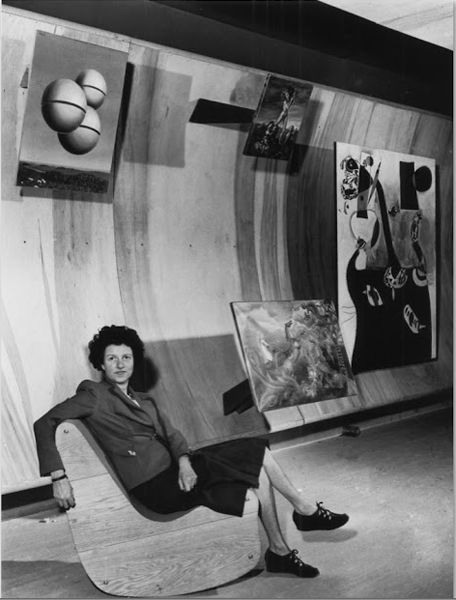
The best traditional galleries are not just rent-seeking storefronts for luxury items, they are homes for artists, and locales for creative exchange among artists, collectors, and patrons. AOTM’s namesake – Peggy Guggenheim’s Art of this Century – was all of those things in the 1940s. Leo Castelli similarly espoused a definitively high-touch gallery model for his stable of star artists in the 1960s and 70s, including Jasper Johns, Roy Lichtenstein, and Frank Stella. And today’s longtime established galleries – to name a few, Marianne Boesky, Marian Goodman, Hauser & Wirth, David Zwirner, Pace, and Gagosian – while also symbolizing the upper echelons of art-as-luxury-good, put teams of gallery staff on call for their artists, to provide the kind of nurturing and resources a successful and sustainable artist’s career requires.
Seeing this need for nurturing in web3 precisely due to the freedom it affords artists, and also looking to “curate” the best features of the traditional art world – the gallery as more than a storefront, and the strong and active ecosystem of artist residencies that support the artistic incubation in the traditional market (such as Skowhegan and the Joan Mitchell Foundation) – AOTM took the liberty afforded by web3 to expand its role within this space through the Artists in Residence initiative.
Nurturing Creative Excellence
From January through April 2024, Amaan Jahangir, Goyong, and Rebecca Rose gathered weekly with members of the AOTM team, led by Aniko Berman and Casey Coyle, to converse and exchange on a variety of fundamental topics and skills, both hard and soft, crucial to success as an artist: how to present yourself externally (bios, artist statements, websites, talking points, sale mechanisms, pricing, and more), and how to think about yourself internally (critiques and virtual “studio visits” to “show and tell”, and to challenge, refine, and expand the artist’s practice). We also brought in outside guests – collectors, patrons, and builders – Benny “Redbeard” Gross, Sebastien Sanchez, and Pablo Rodriguez-Fraile to provide insights and answer questions in intimate, private conversations with the artists.
On a fundamental level, the goal of the three months was to provide a space for growth and nurturing through creative and professional development, culminating in a curated collection sale of 1/1s from each artist, as well as open editions to provide multiple access points to the artists and to broaden visibility (a first for both AOTM and for the artists, an experimental but noteworthy part of AiR’s curriculum). The collection sale launches on May 14, 2024. Each artist will also contribute a new artwork to the AOTM Collection (in an additional nod to Peggy Guggenheim’s Art of this Millenium, which also functioned as a permanent exhibition space for the patron’s personal collection of trailblazing early 20th century art).
On a more philosophical level, our goal was one of discovery. Who and what are the artists and art of our time, and how can we support them? These three very different creators – from different backgrounds, mediums, and geographies – came together weekly, communing across three different time zones, to intentionally strive for new modes of professionalism and collaborative learning, teaching us as well as each other, investing in themselves, building each other up and building up this space.
Together they demonstrate the textured breadth and vision of this space, and the commitment of those willing to expand it through innovative learning, collaboration, and intrepid trust. While three artists together cannot represent the full spectrum of the vast ocean of creativity in the digital art sphere, the differences coupled with the shared values of this group – Rebecca Rose, Goyong, and Amaan Jahangir – offer a beautiful and poignant snapshot of the artists and art of our time.
And time is indeed the throughline visible when considering the three individual bodies of work created by the artists collectively during their time as AiR I. While their very different processes mean that their works were created in different time registers, and while their very different visions result in different expressions aesthetically and thematically, ultimately each artist’s collections engage with time – as a subject, force, and concept – and explore time’s meaning in this particular moment in time and culture.
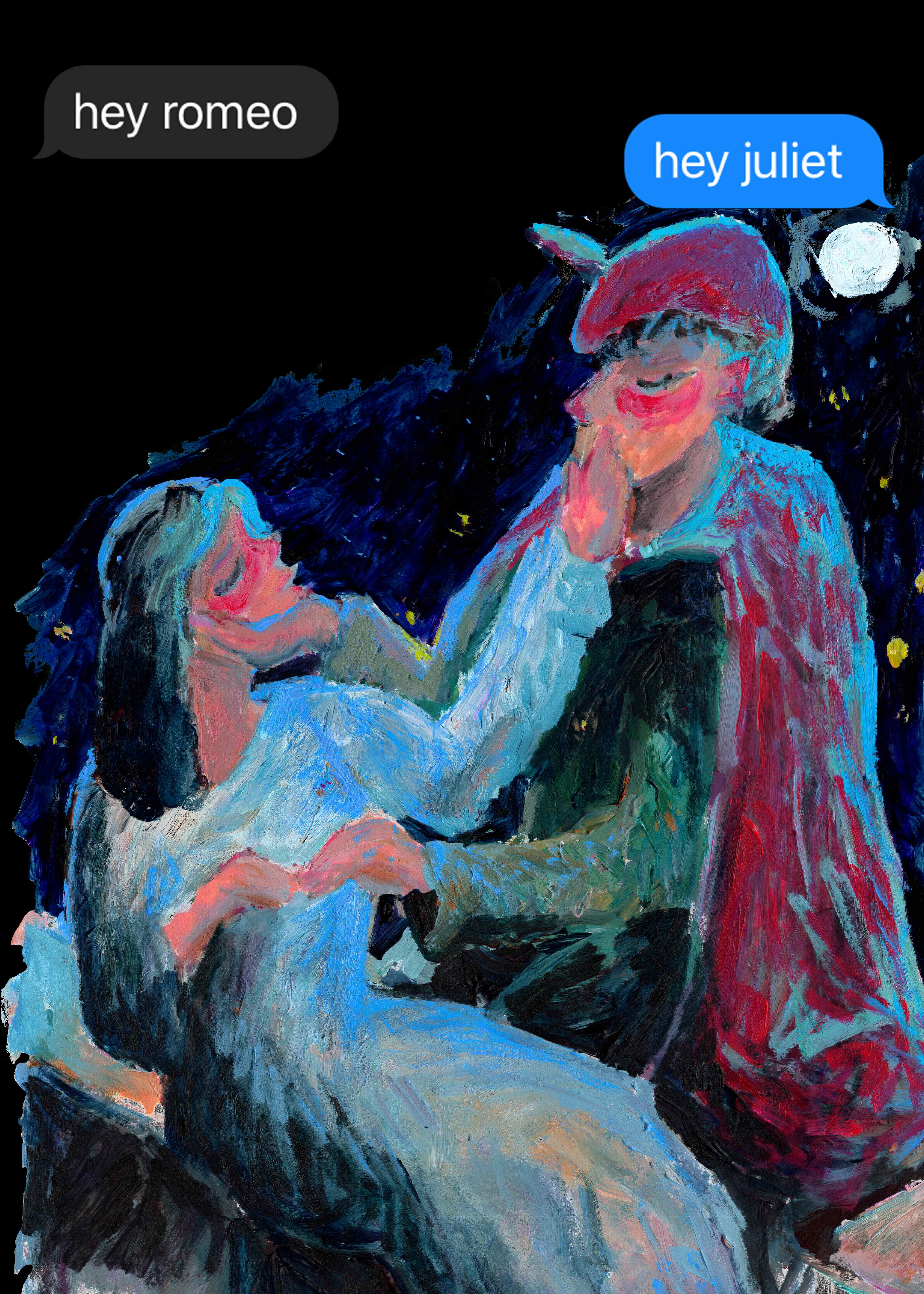
Introducing AOTM’s AiR I
Rebecca Rose began her creative journey focusing on immersive physical sculpture. Today, using digital mediums, she creates expansive collage works that similarly immerse the viewer. She brings her collaged worlds to a standstill, and guides the viewer through a tempered narrative journey. Looking to features of classic analog film – cartoons, stop motion, the amplified melodrama of classic cinematic story arcs – Rebecca updates traditional modes of creation and storytelling for viewers today, playing with time on both a logistical and cultural level.
Her “triptych” for AOTM – 1/1s Trial of the Century and An Innocent Man, and open edition The Court of Public Opinion – treats the subject of juries, trials, and the US justice system. Trial of the Century and An Innocent Man set up a dichotomy, which is ultimately resolved and further questioned by The Court of Public Opinion. The age-old story of good vs. evil, of anti-heros and the hero’s journey, played out on a wholly contemporary stage (as our own country and the world at large is experiencing an unusually volatile narrative arc of justice and political “truths”).
These themes take on an additional layer of meaning in the context of web3. Not only have high profile falls from grace, and their resultant trials, been regular features of our space, but our engagement with each other – whether through on-chain transactions, or through various social media and messaging platforms – result in a constant state of being in public view, and thus on trial, at all times. As protagonists and anti-heros exaggerated by on-chain existence, inherently and incessantly subject to the court of public opinion, we are both dramatically free, and always, in some way, at the risk of doing time.
Goyong is an artist whose practice, like Rebecca Rose, is also born from engagement with material physicality, in this case through the art school study of sculpture. Now through code instead of clay, Goyong’s building up of multiple layers of color, form, and sound still maintains a strong sense of this sculptural approach as he creates deceptively simple two-dimensional scenes.
In Goyong’s collection for AOTM – 1/1s Pond and Lava, and open edition Nap – the placid, pastoral works reveal multitudinal layers, not only of visual and kinetic detail, but also of deep philosophical interest in the nature of culture, time, and the impact of innovation on our existence. Goyong cites his interest in “the fourth industrial revolution” and its indelible marks on contemporary existence as the inspiration for these works.
In this light, “the peaceable kingdom” of Pond becomes a wistful respite from the media onslaught of our daily lives; an uneasy reverie about nature as savior from the harsh light of screens, created precisely for, and seen through, such screens. This quiet, seeping violence is more explicit in Lava, with volcanic flows both a source of earthly generation and destruction (a symbolic rhyme with Goyong’s detailed swaths which dissolve into pixelated abstraction). Nap, too, transcends its surface subject. Sleeping bears tamed by hibernation in golden sunlight. Will they awaken with the markets? Goyong’s works contain milliseconds and eons – the delicate flap of butterfly wings and the deep geological time of molten matter. Reflections of our time on earth today, situated within a longer societal arc whose outcome is uncertain.
Amaan Jahangir mixes text and image. Like both Rebecca on Goyong, his works operate on and with multiple aesthetic layers of meaning. A painter at heart, Amaan explores the immediacy of mark-making, the creative intimacy when the artist’s hand and the artwork’s surface meet decisively and momentarily in time and space. Expanding this act outside of a purely formal arena and into the “real” external world, Amaan incorporates screenshots of text messages in his works, layering two planes of communication – one digital, one painterly – on top of each other. Text message as found object and non-art material. Amaan brings the outside world into his works, the outside world as we largely experience it today: through screens.
The immediacy of mark-making finds its counterpart in the immediacy of a text message – the ubiquitous marks we make on each other, and which are made on us daily. In this trio of works for AOTM – 1/1s tragedy and in the garden, and open edition the illusion of heaven – this universal experience is refined through the very personal lens of Amaan’s own romantic past, as expressed through text communications with his former love. The text message – a flippant immaterial form of communication, often forgotten, or intentionally deleted – becomes archived here in tragedy and in the garden, stopped in time and preserved for posterity. Or, it is scrolled through and gnawingly returned to like in the illusion of heaven, a circular conversation with the apparition of the receiver, repetitively re-lived.
Painting as documentation of the creative act, coupled with text message as the expression of an existential one. In our world today, our daily experience moves lighting fast as technological innovation impacts our most intimate experiences. Amaan’s work plays with the bittersweet repercussions of this transience, relating it to the wholly human time register of memory, loss, and desire.

AOTM is honored to work with these artists of our time, both through our existing roster of leading digital artists and now with the past and future cohorts of our Artist in Residence program. We sincerely thank and congratulate Amaan Jahangir, Goyong, and Rebecca Rose for being our first Residents, and look forward to seeing what the future holds for us all.
